Texas, a state vast in both heart and landscape, is a living tapestry woven with an incredible variety of wildlife. If you’ve ever wandered through its rolling hills, dense forests, or expansive deserts, you’ve probably sensed the stirrings of its native inhabitants—maybe you’ve even caught a glimpse. Even just chilling in your backyard, you might’ve been serenaded by the chirps and warbles of unseen creatures, reminding you that in Texas, humans and wildlife are neighbors.
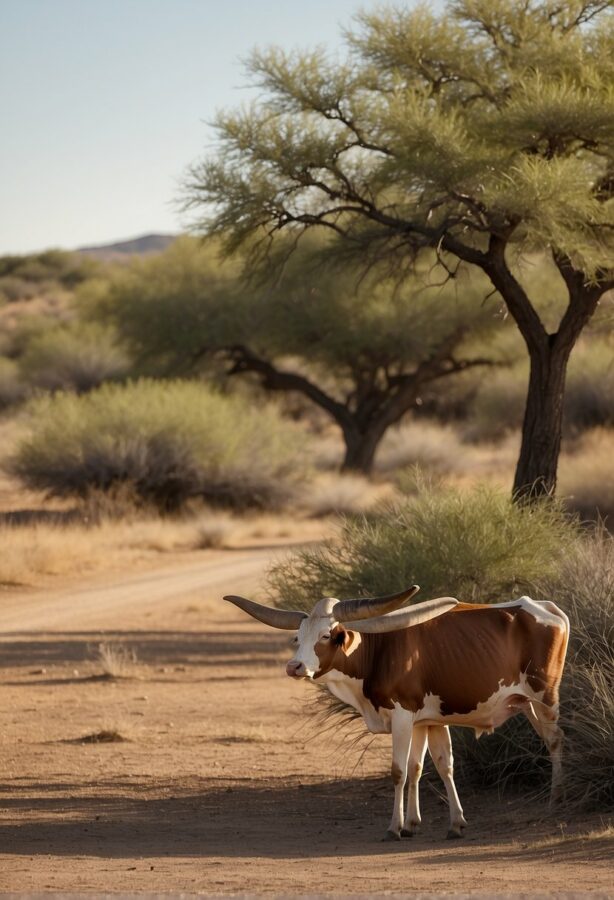
The Lone Star State is home to critters that are as varied and colorful as the state itself. Remember that time at your cousin’s barbecue, when everyone dashed inside as the Texas rat snake made an unexpected cameo? Or how about those summer nights spent trying to out-whistle the Northern black-bellied whistling duck? It’s a funny name, sure, but man, can they carry a tune! It’s not all about the oddballs though; the classic nine-banded armadillo also trots across this land, armored and ready for whatever Texas throws its way.
What truly makes Texas distinctive, wildlife-wise, are the surprising encounters. Have you ever bumped into the elusive ocelot or spotted a majestic bald eagle soaring overhead? You know, there’s a story behind each of these species, a slice of Texan history they carry with them. It’s these stories and connections that make Texas not just a state, but a state of being, with a spirit that’s as wild and free as the creatures that roam its ranges. So put on your explorer’s hat and let’s take a stroll through the natural heritage of this great state. After all, Texas wildlife isn’t just about animals; it’s about our shared history, and you’re a part of that story.
The Armadillos of Central Texas
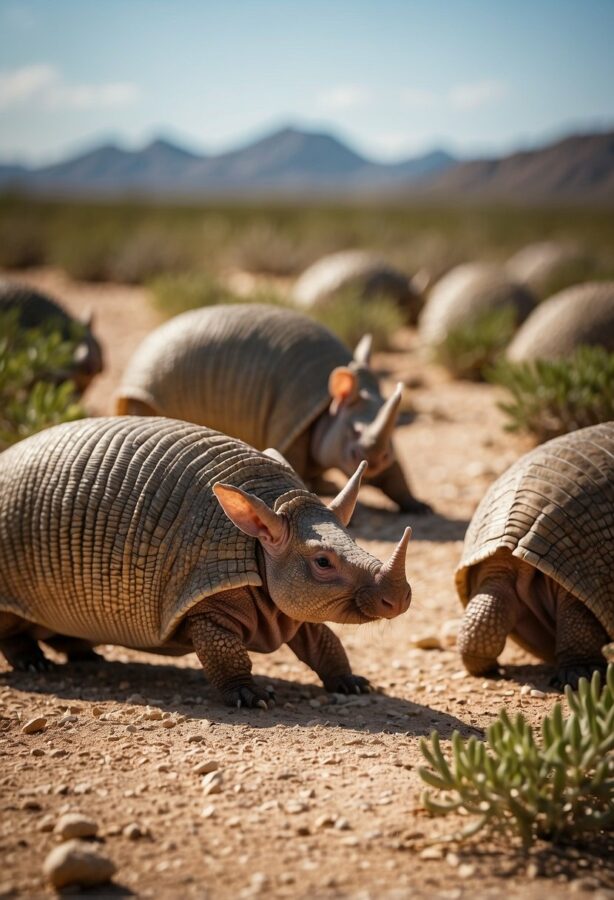
If you’re strolling through the brush or driving down a highway in Central Texas, there’s a critter you’re bound to come across—yes, I’m talking about armadillos. Let’s get to know these shielded neighbors who call the heart of Texas home.
Nine-Banded Armadillo
The most familiar face you’ll spot out here is the nine-banded armadillo. Scientifically known as Dasypus novemcinctus, these little fellows are the only armadillo species that’s made its way up into North America. Now, you might think all armadillos can roll into a ball when they’re scared, but guess what? That’s a myth—our Texan friends are a bit too stiff for those gymnastics.
Armadillo Habits and Habitat
Armadillos are diggers—real good ones, too. They’re always on the prowl for insects in the sandy soils and forests. And talk about homebodies; they like to keep cozy in burrows when it’s time to rest up or escape the heat. But these creatures aren’t just about staying underground, nah. When it comes to crossing water, and here’s a bit of trivia for ya, these critters can actually hold their breath and waddle across the bottom of small bodies of water. Makes you wonder what else they’re capable of, doesn’t it?
The Bats of Bracken Cave
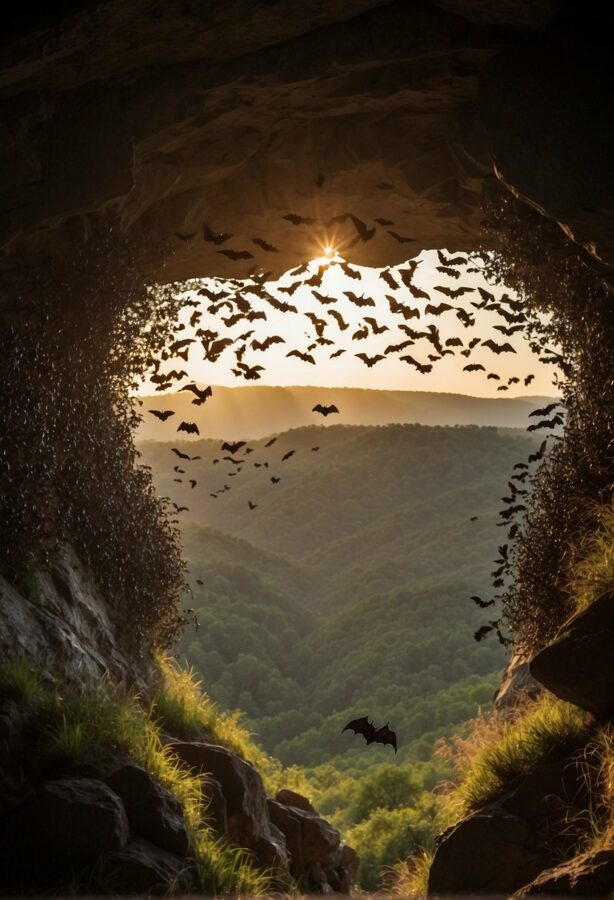
Before you even think about the Lone Star State’s cowboys and BBQ, let me whisk you away to a crepuscular world where the dusk skyline is stitched with tiny, darting silhouettes. You’re about to get familiar with an extraordinary corner of Texas, where millions of tiny, winged mammals form one of the most jaw-dropping spectacles of the natural world.
Mexican Free-Tailed Bats
Now, isn’t it a curious thing that the very critter Texans call their state flying mammal isn’t even grounded for most of their active hours? The Mexican free-tailed bats, or Tadarida brasiliensis if we fancy being scientifically proper, are anything but your average mammal. These bats boast of a built-for-speed physique, and if you were to peer closer—which, mind you, might be a tad difficult as they zip past—you’d notice their tail sticks out past their tail membrane, a feature you won’t see on their batty relatives.
Every summer, like clockwork, these critters descend upon Bracken Cave, just a stone’s throw away from Austin, and transform it into a buzzing, fluttering hub of activity. You might find it odd I call it buzzing when we’re discussing bats, not bees, but trust me, the sound of millions of wings in unison is nothing short of that.
Bat Population Dynamics
But how do so many bats call this single cave home, you wonder? Sheer numbers are a game here—more than 15 million, they say! What brings these bats to Bracken aren’t the schools or the nightlife, but it might as well be; plenty of insects to munch on makes it a paradise for these predators.
Let’s not beat around the bush; these bats live a life dictated by need and survival. The females congregate here for a maternity retreat, safely birthing and rearing their young—rigorous work, I bet. And as much as these winged residents have their peculiar residential choices, they face predators of their own. But it seems they’ve got the tricks of the trade mastered, evading threats and ruling the twilight skies.
White-Tailed Deer Across Texas
In Texas, the graceful white-tailed deer is as much a part of the landscape as the wide, blue skies. As our most familiar deer species, their presence tells a story of adaptability and interconnection with Texas’ diverse ecosystems.
Deer Biology and Behavior
Fascinating creatures they are, white-tailed deer! These mammals have a knack for survival, showcasing a range of behaviors that keep them thriving. They’ve got this impressive tail that flares up like a flag when danger’s brewing – a sight you can’t miss. And they’re not just solitary wanderers; nope, they form herds where, sometimes, you might find a seasoned doe laying down the law.
I remember sitting by the rivers that ribbon through Texas, and boy, you can spot whitetails coming for a sip in the cooling twilight. When the first leaves of fall hit the ground, the males start their dance, antlers locked, battling for the favor of nearby does. It’s like watching a live drama unfold from your back porch.
Habitats and Human Interaction
White-tails don’t much care for a picky lifestyle – they’re at home in the forests and grasslands, making do wherever they can lay their hooves. I’ve seen ’em in the wild scrublands, taking it easy in the shade, or grazing alongside cattle on a ranch. These deer are agile, finding their paths around rivers and troughs, coexisting with humans more often than you’d think.
Ever noticed how they’ve become quite the familiar companions in suburban areas? Yeah, they’ve been known to munch on a garden or two, but that’s just them being opportunistic, blending their lives with ours. It’s a delicate dance with us humans, you know. We build and expand and they adjust, but it’s not always easy. Predators like coyotes are still a real concern for them, and then there’re the rodents that compete with ’em for food – it’s a whole ecosystem shuffle going on right beneath our noses.
The Rattlesnakes of West Texas
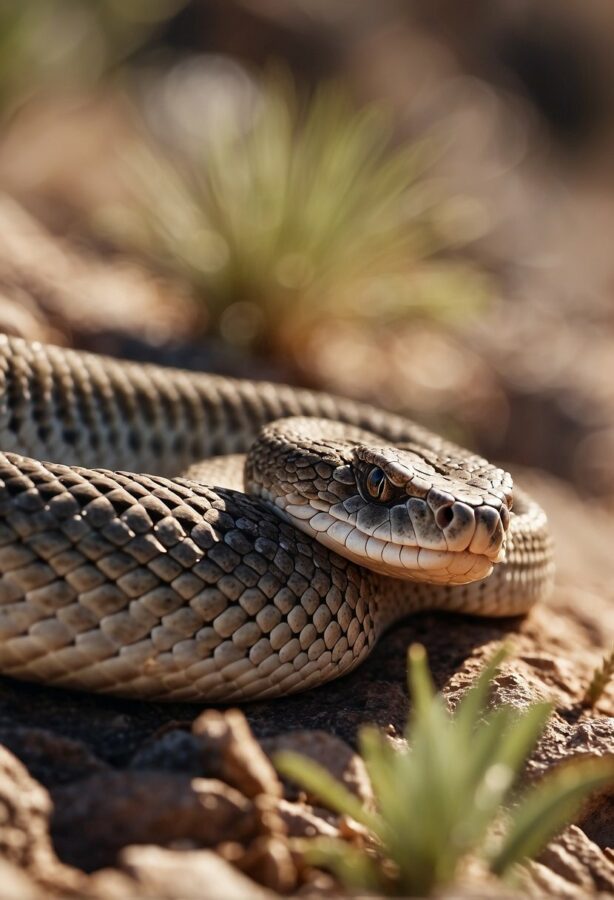
When you picture West Texas, you might imagine wide-open skies, rugged desert landscapes, and the distinctive sound of rattlesnakes. Yeah, these critters are as much a part of the West as cowboy boots and tumbleweeds.
Venomous Snake Species
Let’s talk about the venomous snakes slithering around West Texas, shall we? The Western Diamondback Rattlesnake makes its home right in the heart of this tough terrain. These guys can’t get enough of the desert and rocky canyons – it’s like their own personal playground. And don’t think they’re small either. They can grow to be pretty gargantuan, making them a formidable presence in their habitats.
Now, you better be careful when you’re out hiking, because these rattlesnakes aren’t the friendliest neighbors. Their bite packs a wallop of venom, you know? But don’t let that scare you away. Most rattlesnakes would rather save their precious venom for their next meal than waste it on a giant like you. They’ll give you a warning with that iconic shake of their tail, so just back away slowly and you’ll be fine.
Rattlesnake Conservation
But it ain’t all about watching your step. It turns out these creatures are facing some of their own troubles. Conservation is a word we need to stick in our hats when it comes to these reptiles. Here’s the deal: their homes are gettin’ farther and fewer between thanks to all the hustle and bustle of human activity encroaching on their range. This is sparking some chatter about whether they might start to be considered “threatened” down the line.
The Coyotes of the Panhandle
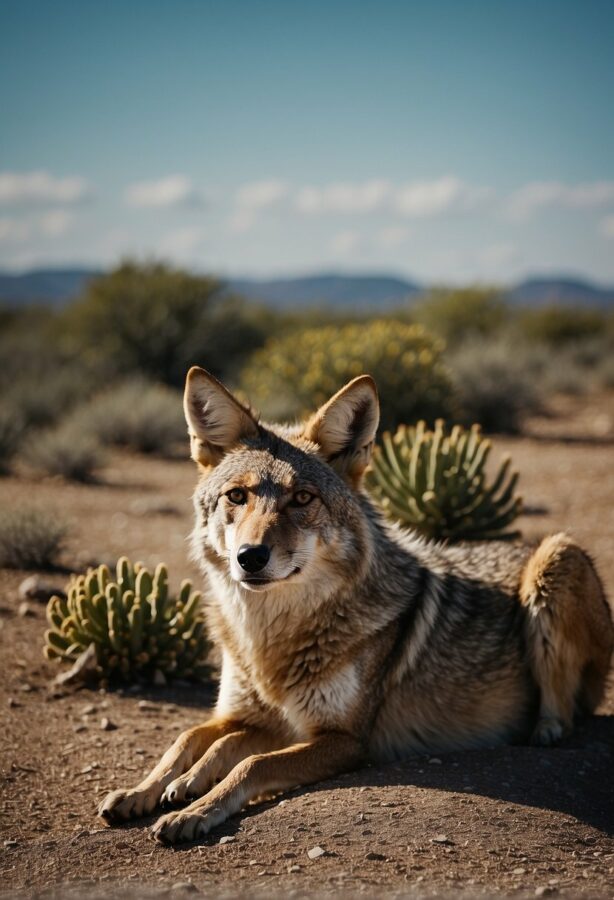
If you’re wondering about the wildlife in Texas, particularly in the Panhandle, one of the most fascinating creatures to look out for is the coyote. Known for their adaptability, coyotes have become a key player in maintaining the ecological balance in this region.
Coyote Adaptations
You’ll find that coyotes, with their incredible adaptability, are the survivalists of North American fauna – especially those out in the Panhandle. A coyote’s fur, a mottled gray or buff, blends seamlessly with the grasslands and deserts they call home. They’ve got these large, pointy ears that aren’t just for show – they enhance their hearing so they can pick up the rustle of a mouse or the quiet footsteps of other mammals they might hunt. And about their legs – those long, slender tools – thought they’re just elegant? They’re actually built for speed and navigating tricky terrain with ease.
Have you ever seen a coyote on the move? It’s grace personified. Every step is calculated, ensuring they maintain the upper hand as both predators and sometimes prey. Coyotes don’t just live alongside birds, rodents, amphibians, and reptiles; they interact with them, impacting each other’s lives in ways that are profound and, quite often, unseen.
Coyotes and Ecosystem Balance
But what’s the big deal with coyotes keeping to the grasslands and deserts of the northern Mexico and Panhandle? I’ll tell you – it’s all about balance. Coyotes, like any respectable predators, manage populations of smaller animals and sometimes bigger ones, too. This isn’t just them being greedy; it’s them ensuring that one species doesn’t dominate and that resources don’t run thin.
You know how it is, right? Imagine your own backyard. If you’ve got too many of one thing, it throws everything off. Same goes for the Panhandle. Coyotes control those critters that might otherwise become pests. Plus, they’re a food source for larger predators. And let’s not forget, they’re scavengers, which means they help in cleaning up the environment, munching on carrion that would otherwise go to waste. It’s all connected, and coyotes are a linchpin in this complex web of life.
So next time you’re out enjoying the rugged beauty of Texas’ Panhandle, keep your eyes peeled for coyotes. You might just spot a furry figure skirting the edge of a field or hear their iconic howl as the sun dips below the horizon. It’s a reminder that, in nature’s intricate mosaic, every piece has its place, and the coyote? Well, it’s got a pretty important one, if you ask me.